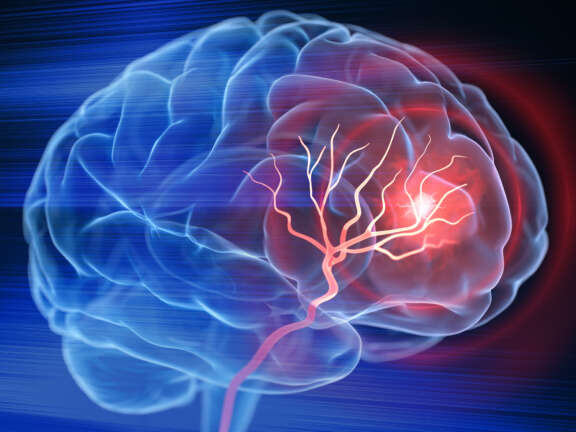Learn to Recognize and Prevent Stroke


Did you know stroke is the fifth-leading cause of death? That’s why it’s so critical to know the signs of stroke. Your ability to spot a stroke early could be life-changing for someone you love.
Stroke Signs
Learn what to look for when you think someone is having a stroke. Use the BE FAST reminder to look for stroke signs:
- Balance: Are they suddenly having trouble with their coordination or balance?
- Eyes: Are they suddenly having changes in sight, such as double vision or loss of vision in one or both eyes?
- Face drooping: Is one side of their face numb or sagging? Ask them to smile.
- Arm weakness: Is one of their arms numb or weak? Ask them to raise both arms.
- Speech trouble: Is their speech slurred or difficult to understand? Ask them to repeat simple sentences like “The grass is green.”
- Time to call 911: If they show one or more of these symptoms—even if they go away—call 911.
Another less common symptom of stroke is a severe headache that comes on suddenly. If in doubt, call 911.
What to Do If You Think Someone Is Having a Stroke
If you think someone is having a stroke, take these steps to help reduce their chances of long-term stroke complications:
- Call 911: Even if you are close to an emergency department, paramedics can get to you sooner and provide the right care en route.
- Prepare for paramedics: Create a clear path to the person for emergency services. Unlock the entry door and watch for them to arrive.
- Write down the time symptoms began: Knowing approximately how long the person has been experiencing symptoms can help medical personnel provide the appropriate treatment.
- Help the person lie down: It’s safe for the person to lie down. Encourage them to stay calm and still. Use a pillow to keep their head elevated.
- Loosen any restrictive clothing: Help them breathe easily and relax.
- Check for breathing if the person is unconscious: Check for a pulse and whether they’re breathing. If they don’t have a pulse, begin CPR right away. (Learn how to perform CPR from the American Red Cross.)
If you suspect someone is having a stroke, you should also follow these “don’t” guidelines:
- Don’t give the person aspirin: Aspirin is beneficial for some types of strokes, but for others, it can be harmful. Let the medical professionals decide what is best.
- Don’t give the person anything to eat or drink: Strokes can cause problems with muscle control, and trying to swallow food or drink can be dangerous.
- Don’t drive yourself: If you believe you’re having a stroke, don’t drive yourself to the hospital. Call 911 immediately.
5 Ways to Reduce Your Stroke Risk
You can make lifestyle changes to help reduce your risk of having a stroke. These five healthy changes can greatly reduce your future stroke risk:
1. Maintain a healthy diet
Eating a diet rich in fruits, vegetables, whole grains, and lean proteins can help protect your heart and reduce stroke risk. Limit or avoid fried or fatty foods, saturated fats, and processed foods.
2. Exercise regularly
Getting regular physical activity protects your body from a host of health concerns. According to the World Stroke Organization, 30 minutes of exercise five times a week can reduce your stroke risk by 25%. Try walking, swimming, or riding a bike. Find an exercise buddy—perhaps a family member, neighbor, or co-worker—to help you stay accountable.
3. Monitor your blood pressure
According to the American Heart Association, most people who have a first stroke also have high blood pressure. High blood pressure can contribute to stroke risk in multiple ways:
- It can lead to blood clots in the brain.
- It can damage tiny blood vessels deep inside the brain.
- It can lead to bleeding in the brain.
4. Avoid smoking and excessive alcohol
Smoking tobacco increases your risk of a stroke. The World Stroke Organization reports that a person who smokes one pack a day is six times more likely to have a stroke than someone who doesn’t smoke.
Drinking excessive amounts of alcohol contributes to several other high-risk conditions which can add to your stroke risk:
- Atrial fibrillation (abnormal heartbeat)
- Diabetes
- Hypertension (high blood pressure)
- Liver damage
- Obesity
Limiting your alcohol consumption can help you avoid these other conditions and reduce your risk of a stroke.
5. Manage chronic conditions
Working with your primary care or specialty provider to keep your chronic health conditions in check goes a long way in reducing your stroke risk. If you have a chronic condition—like high blood pressure, diabetes, or high cholesterol—take your prescribed medications and make lifestyle changes to help manage them.
Take Charge of Your Health
As you’ve seen, there are actionable steps you can take to reduce your stroke risk. If you aren’t sure where to start, ask your primary care doctor at your annual wellness exam this year.
